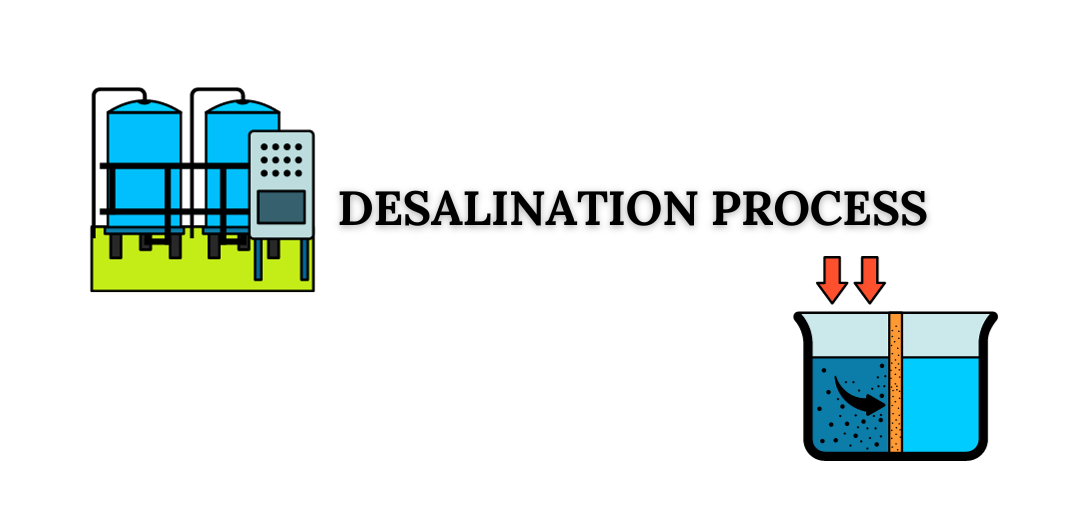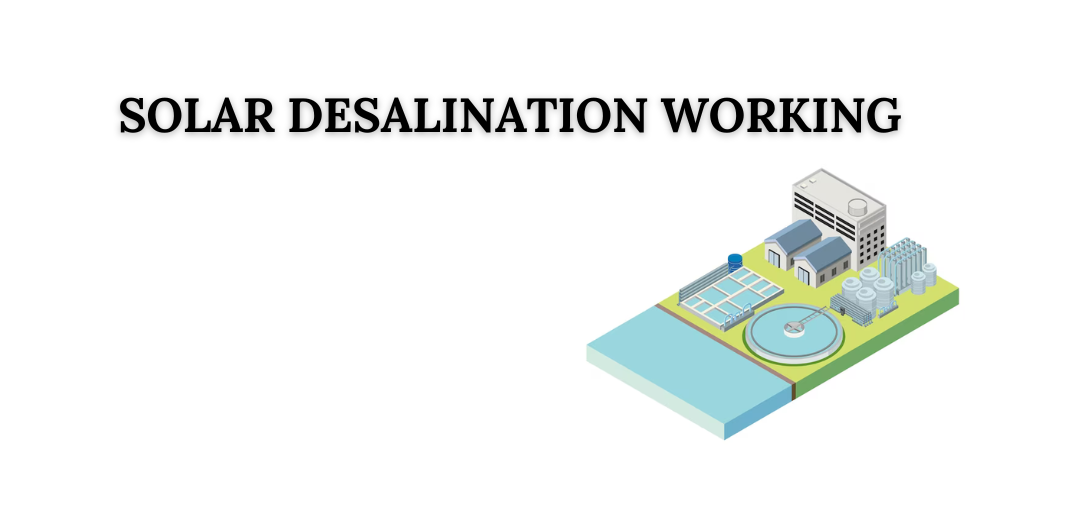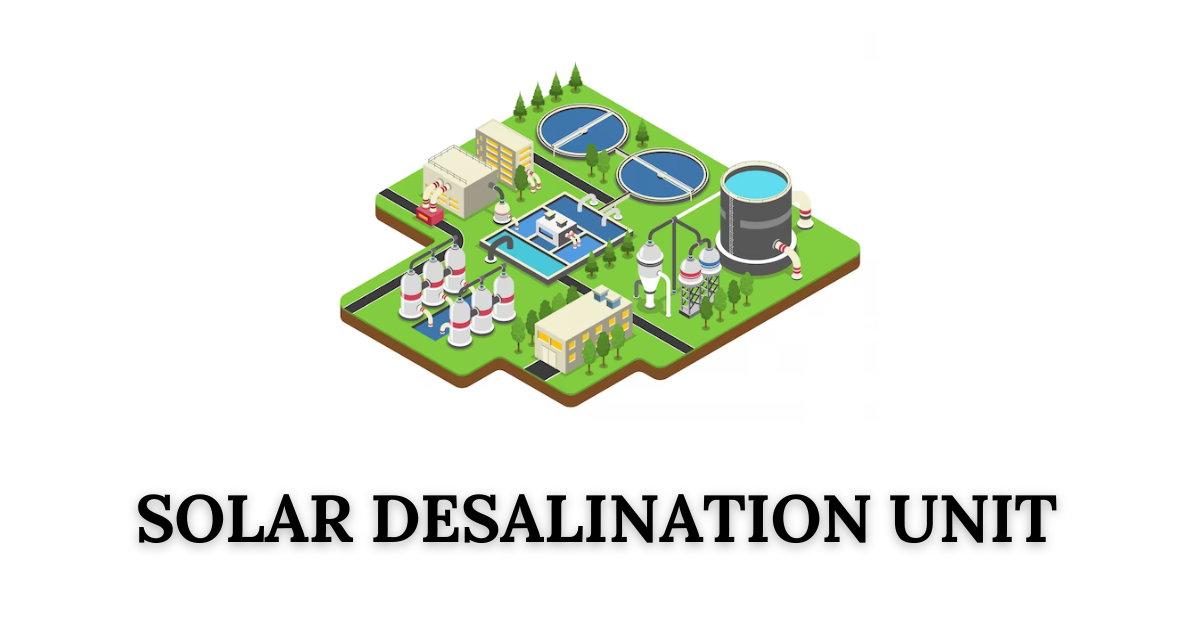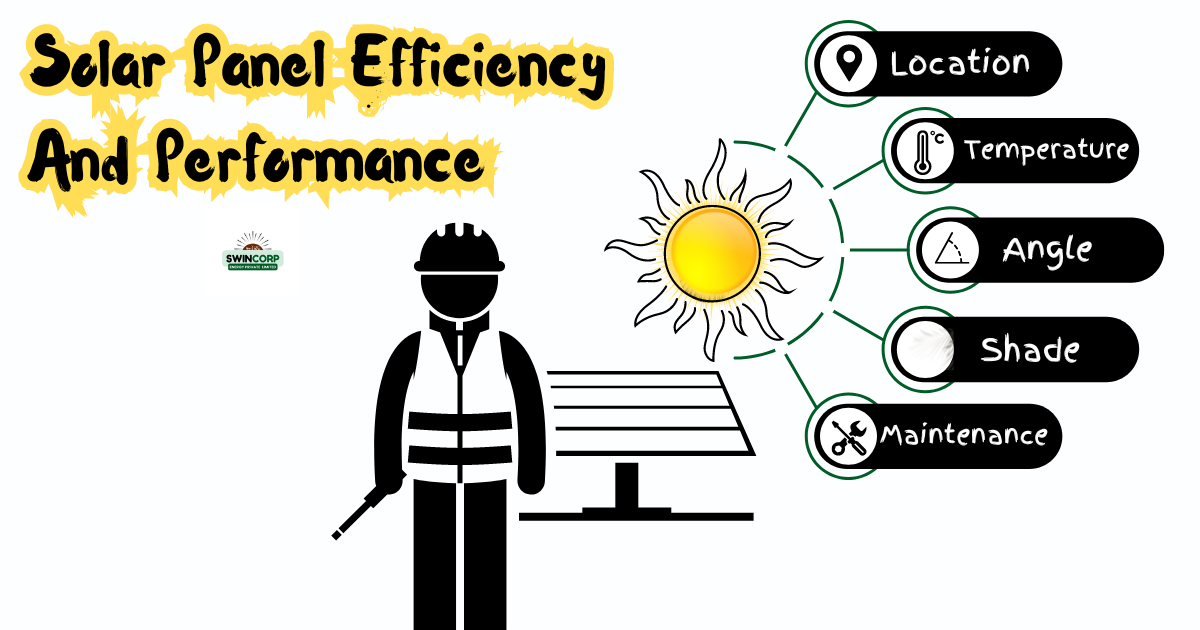What is Solar Desalination?
Solar desalination is a process that uses solar energy to remove salt and other impurities from seawater or brackish water, making it suitable for drinking, irrigation, or industrial use. Solar desalination is a sustainable and environmentally friendly way to produce clean water, as it does not require the use of fossil fuels or chemicals.

Types of Solar Desalination Processes
There are two main types of solar desalination processes: thermal and membrane-based.
Thermal solar desalination
Thermal solar desalination processes use heat from the sun to evaporate water, leaving behind the salts and other impurities. The evaporated water is then condensed to produce freshwater.
Some common thermal solar desalination processes include:
- Multi-stage flash (MSF): MSF is a complex process that involves evaporating seawater in a series of chambers with decreasing pressure. The evaporated water is then condensed in cooler chambers, producing freshwater.
- Multi-effect distillation (MED): MED is similar to MSF, but it uses a single evaporator and multiple condensers. This makes it more efficient and less expensive to build and operate than MSF.
- Vapor compression (VC): VC uses a compressor to increase the pressure of seawater, which causes it to evaporate. The evaporated water is then condensed to produce freshwater.
Membrane-based solar desalination
Membrane-based solar desalination processes use semipermeable membranes to filter out salts and other impurities from seawater or brackish water.
The most common membrane-based solar desalination process is reverse osmosis (RO). RO uses pressure to force seawater through a semipermeable membrane that allows water molecules to pass through but blocks salt and other impurities.

How does solar desalination work?
The specific way that solar desalination works depends on the type of process being used. However, all solar desalination systems have two main components:
A solar energy collection system: This system collects solar energy and converts it into electricity or heat.
A desalination system: This system uses solar energy to remove salts and other impurities from seawater or brackish water.
Solar energy collection systems
The most common type of solar energy collection system used for solar desalination is solar photovoltaics (PV).
Solar PV panels convert sunlight directly into electricity.
Another type of solar energy collection system that can be used for solar desalination is solar thermal. Solar thermal systems collect sunlight and use it to heat water or other fluids.
Desalination systems
The type of desalination system used for solar desalination depends on the specific needs of the application. Thermal solar desalination systems typically use MSF, MED, or VC processes. Membrane-based solar desalination systems typically use RO processes.
Benefits of solar desalination
Solar desalination has a number of benefits, including:
Sustainability: Solar desalination is a sustainable way to produce clean water, as it does not require the use of fossil fuels or chemicals.
Environmental friendliness: Solar desalination is an environmentally friendly way to produce clean water, as it does not produce any harmful emissions.
Scalability: Solar desalination systems can be scaled to meet the needs of a wide range of users, from small communities to large cities.
Reliability: Solar desalination systems are reliable and require minimal maintenance.
Drawbacks of solar desalination
The main drawback of solar desalination is the cost. Solar desalination systems can be expensive to install and operate. However, the cost of solar desalination is decreasing as the technology improves.
Applications of solar desalination:
Solar desalination can be used to produce clean water for a variety of applications, including:
Drinking water: Solar desalination can be used to produce clean drinking water for communities in coastal areas or areas with limited freshwater resources.
Irrigation: Solar desalination can be used to produce water for irrigation in arid and semi-arid regions.
Industrial use: Solar desalination can be used to produce water for industrial use, such as food processing and manufacturing.
Examples of solar desalination systems in use
There are a number of solar desalination systems in use around the world. Here are a few examples:
The world’s largest solar desalination plant is located in Saudi Arabia. It has a capacity of 600,000 cubic meters of freshwater per day.
The Solar Oasis project in Australia is a community-based solar desalination project that provides freshwater to a remote community.
The Sunwater desalination project in Chile is a solar-powered RO desalination plant that provides freshwater to a mining operation.
Future of solar desalination
Solar desalination is a rapidly growing industry, and the demand for solar desalination systems is expected to increase in the coming years. This is due to a number of factors, including climate change, population growth, and increasing water scarcity.
Conclusion
Solar desalination is a promising technology for providing sustainable and affordable freshwater to communities around the world. As the cost of solar energy continues to decrease and solar desalination technology continues to improve, solar desalination is expected to play an increasingly important role in meeting the world’s growing freshwater needs.
READ OUR PREVIOUS ARTICLES:
- Advantages of Wind Energy
- CNG Full Form
- Suzlon Energy share price
- Top 10 Largest Solar Power Plants in India
- India’s Power Sector Analysis
- Disadvantages of Hydropower
- Is India Ready for Electric Vehicles ?
- Best Rooftop Solar Panels For Home
- Best Solar Lights for your Home
- JSW Energy Share Price
- Advantages of Nuclear Energy
- G20 Summit Countries
- Choose the Right Battery Energy Storage
- How Hydropower Plants Work ?
- What is Solar Desalination?
Keys: solar desalination, solar desalination process, solar desalination system, solar desalination technology, solar desalination plant, solar desalination cost, solar desalination benefits, solar desalination types, solar desalination applications, solar desalination research, solar desalination development, solar desalination companies, solar desalination projects, solar desalination sustainability, solar desalination environment, solar desalination future, solar desalination renewable energy, solar desalination water crisis, solar desalination water production, solar desalination freshwater, solar desalination seawater, solar desalination brackish water, solar desalination membrane, solar desalination thermal




Can I use solar power during a power outage? - Swincorp Energy
[…] What is Solar Desalination? […]
3KW Solar Power System 2023: Cost, Subsidy. - Swincorp Energy
[…] What is Solar Desalination? […]
A Guide to Solar Inverters - Swincorp Energy
[…] What is Solar Desalination? […]
Solar Panel Manufacturing : Process, Production Stages - Swincorp Energy
[…] What is Solar Desalination? […]
Solar Trackers : Types, Pros, Cons | Swincorp Energy - Swincorp Energy
[…] What is Solar Desalination? […]
Maruti Brezza CNG: Mileage, Review, Features - Swincorp Energy
[…] What is Solar Desalination? […]
Top 5 Best Solar Lights for Your Home | Swincorp Energy - Swincorp Energy
[…] What is Solar Desalination? […]
Tata Punch EV: Best Electric SUV under 15 Lakhs - Swincorp Energy
[…] What is Solar Desalination? […]